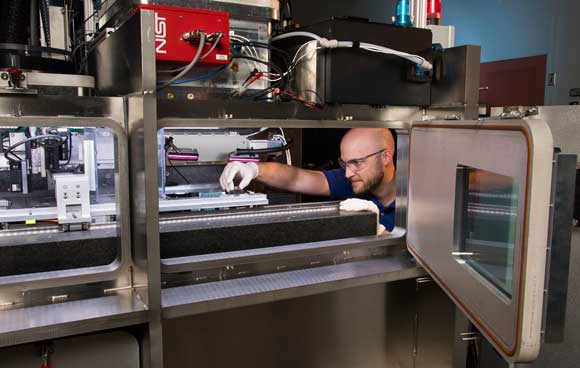NIST awards nearly $4 million in grants to advance metal AM in US
January 7, 2021

The U.S. Department of Commerce’s National Institute of Standards and Technology (NIST), Gaithersburg, Maryland, USA, has awarded nearly $4 million in grants to accelerate the adoption of new measurement methods and standards in order to advance US competitiveness in metal Additive Manufacturing.
NIST states that with these grants, it is addressing barriers to adoption of Additive Manufacturing, including surface finish and quality issues, dimensional accuracy, fabrication speed, material properties and computational requirements.
The following organisations will receive NIST Metals-Based Additive Manufacturing Grants Program funding over two years:
Georgia Tech Research Corporation
This project will analyse detailed data gathered during a Powder Bed Fusion (PBF) process to both control the manufacturing and predict the final properties of the manufactured parts. The goal is to establish a comprehensive basis to qualify, verify and validate parts produced by this technique. The initial focus will be on a titanium alloy that could see extensive applications in the health care and aerospace sectors.
University of Texas at El Paso
This project will define a test artefact that will standardise the collection of data on the process inputs and performance of parts made via Laser Beam Powder Bed Fusion (PBF-LB), an important method of metal AM. Academic, government and industrial partners will replicate the artefact and collect data on the key inputs to the process and the resulting properties of the artefact for a data repository. The work will lead to a greater understanding of the AM process and will allow for greater confidence in final parts.
Purdue University (West Lafayette, Indiana)
Qualification of parts made by AM now requires an extensive set of tests. This project aims to reduce that burden by developing a standardised approach to predict key performance properties through measurements of material microstructures and the use of mathematical models. The work promises to create a streamlined method for the industry to understand part performance with less testing than is currently required.
Northeastern University (Boston, Massachusetts)
This project aims to improve sensing approaches and create a suite of sensor technologies that will help optimise cold spray Additive Manufacturing. Cold spray AM processes have the potential to create parts that are more durable and stronger than those made with other AM processes. New sensors will help characterise the properties of the powder feedstock and the key parameters of the process, such as temperatures and part dimensions, and allow for better control of this promising technique.
In addition to these awards, NIST anticipates funding additional projects as part of a second phase of awards in the first half of 2021.
“NIST and the entire Department of Commerce are committed to providing American organisations the necessary resources to thrive and build upon their discoveries and innovations,” stated Wilbur Ross, U.S. Secretary of Commerce. “I congratulate these grant awardees, whose contributions to metals-based Additive Manufacturing will certainly help America play a bigger role in the industry.”
Walter G Copan, Under Secretary of Commerce for Standards and Technology and NIST Director, commented, “By addressing important measurement challenges, these projects will improve US manufacturers’ ability to use metals-based Additive Manufacturing to make high-quality, innovative and complex products at high volume. We look forward to working with these organisations to further leverage NIST experience and expertise in this key area of advanced manufacturing.”
















